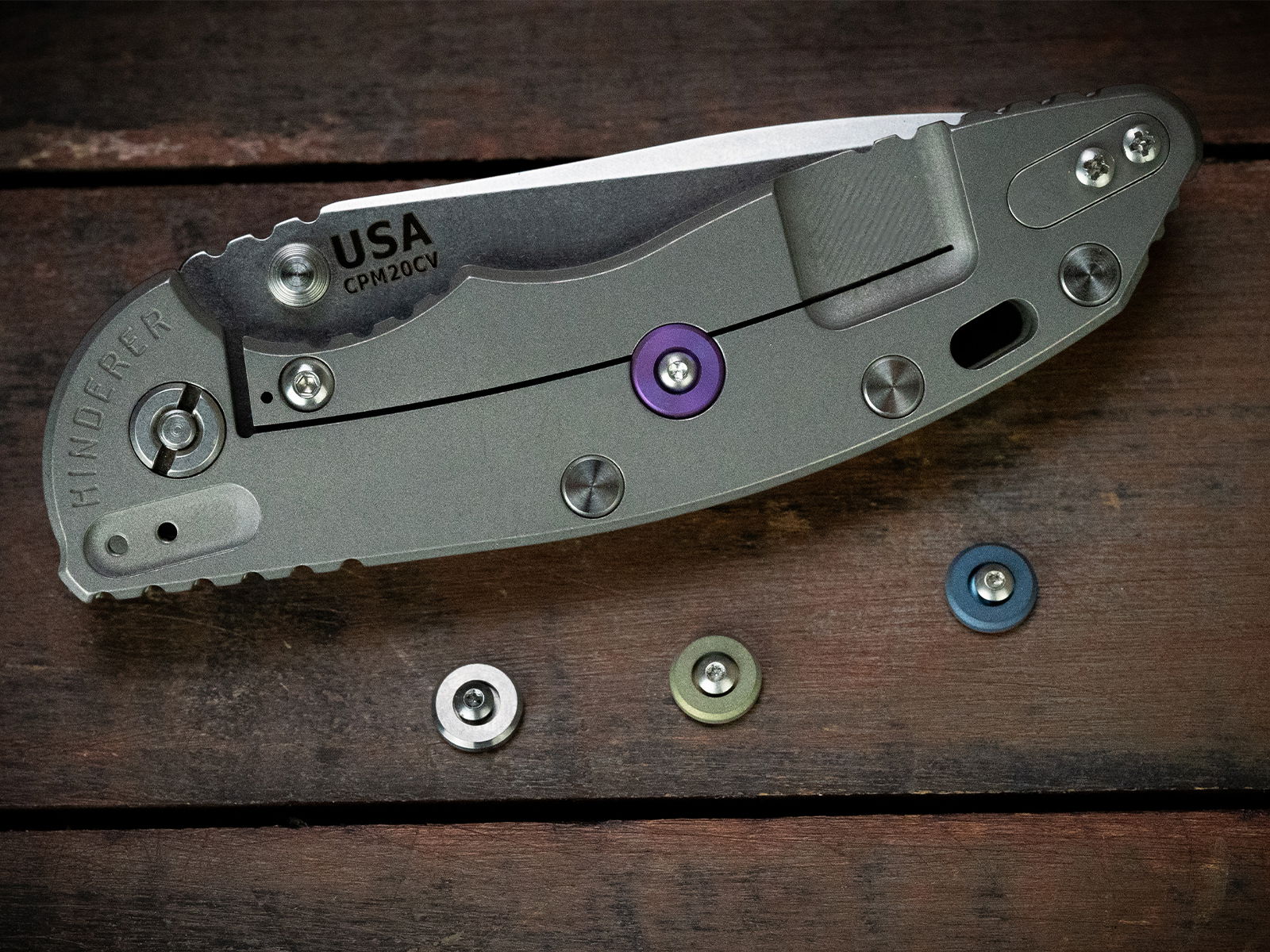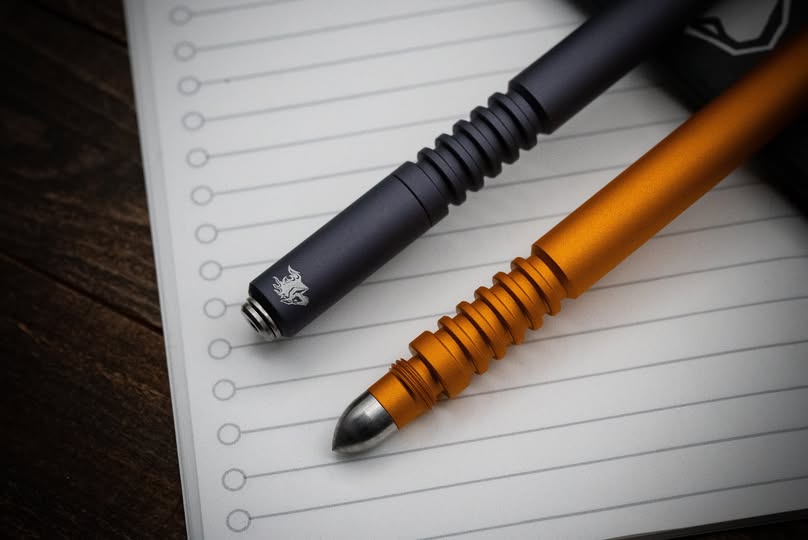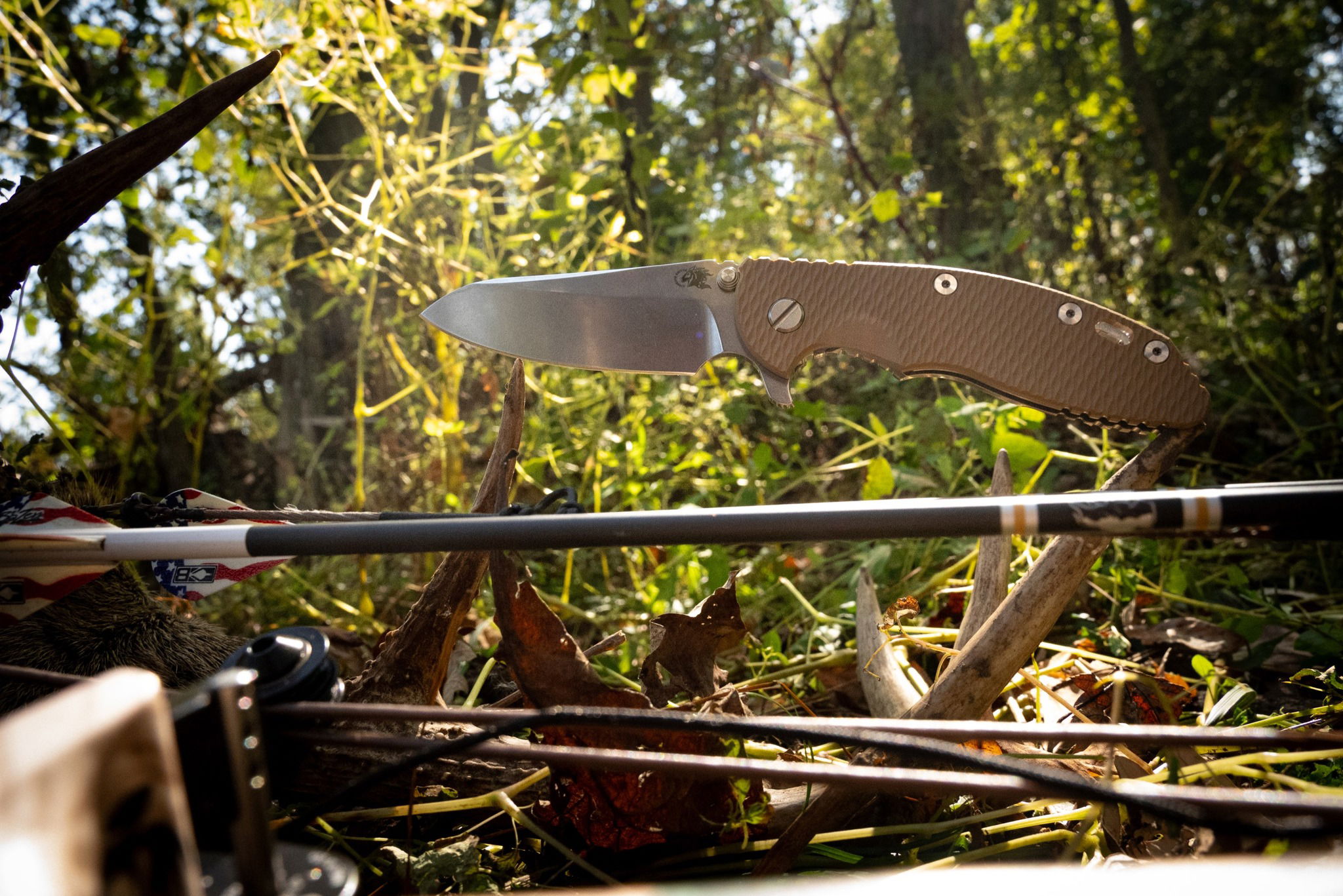The Story Behind the Hinderer Lockbar Stabilizer


Live the Lifestyle
Subscribe to our lifestyle blog and be the first to receive latest articles, videos, how-to information and customer photos
At Rick Hinderer Knives, innovation has always been driven by real-world needs. From the shop floor to the fireground, every design element has a purpose—and few innovations capture that better than the Hinderer Lockbar Stabilizer (LBS).
This small disc may look simple, but it represents a big step forward in the evolution of frame lock folding knives. Here’s the story of how it came to be, why it matters, and how it’s shaped the knife industry.
Seeing the Problem
Years ago, while serving on the fire department, Rick relied on frame lock folders during tough jobs. With heavy turnout gloves on, he noticed a problem: it was easy to overextend the lockbar when closing the knife. Unlike a liner lock, where the handle prevents overtravel, a frame lock can be pushed too far—destroying the spring tension that makes it work. Once that happens, the knife may no longer lock at all.
That was the moment Rick knew a solution was needed.
The Invention
The answer was the Lockbar Stabilizer—a small, circular disc set into the handle that overlaps the lockbar. Its first role is simple but critical: preventing overtravel. No matter how much pressure is applied, the lockbar cannot be pushed past its designed limit.
But Rick noticed something else during testing. On a frame lock, the relief cut that allows the titanium bar to act as a spring also creates a weak point. Under a hard grip, the bar can flex slightly upward, creating unwanted movement. The stabilizer fixes that too.
So while most people first think of it as an overtravel stop, it’s also true to its name: it stabilizes the lockbar, keeping it secure under hard use.
From Ranch to Industry Standard
The Lockbar Stabilizer first appeared on Hinderer models like the Firetac, then quickly became a standard feature on the XM-18. Word spread, and soon other makers recognized its value.
The first company outside of RHK to adopt it was Strider Knives. Strider reached out directly to Rick, and after making a deal, the very first production runs of Strider knives used lockbar stabilizers hand-made in Rick’s shop engraved with “Hinderer.” Those early versions are now collector’s items.
Today, you’ll see variations of the stabilizer across the knife industry. For Rick, that’s a point of pride: proof that the design solved a problem makers and users alike cared about.
Built Into Every Hinderer
If you own a Hinderer folder, chances are you’ve seen that small, round disc built into the lock side. It’s one of those details you might take for granted, but it represents Rick’s design philosophy in action: observe the problem, innovate the solution, and refine the tool for real-world performance.
The Lockbar Stabilizer is more than just a button—it’s a safeguard, a reinforcement, and a reminder that every feature on a Hinderer knife is there for a reason.
Built to Perform. Made to Last. That’s the story behind the Hinderer Lockbar Stabilizer.
Frequently Asked Questions About the Hinderer Lockbar Stabilizer
What is a lockbar stabilizer on a knife?
The Lockbar Stabilizer is a small disc built into the lock side of a frame lock folding knife. It prevents the lockbar from overextending and also stabilizes it during heavy use.
Who invented the lockbar stabilizer?
Rick Hinderer of Rick Hinderer Knives invented the Lockbar Stabilizer after noticing frame lock overtravel issues while serving as a firefighter.
Why is the lockbar stabilizer important?
Without it, a frame lock can be pushed too far and lose spring tension, causing the knife to stop locking securely. The stabilizer prevents this failure and keeps the lock stable under hard grip pressure.
Which knives use the lockbar stabilizer?
It first appeared on Hinderer models like the Firetac and XM-18. Today, it’s found on nearly every Hinderer folding knife—and many other makers have adopted the design as well.
Is the lockbar stabilizer the same as an overtravel stop?
Not exactly. It does prevent overtravel, but it also reinforces and stabilizes the lockbar itself. That dual function is why it’s called the “Lockbar Stabilizer.”


